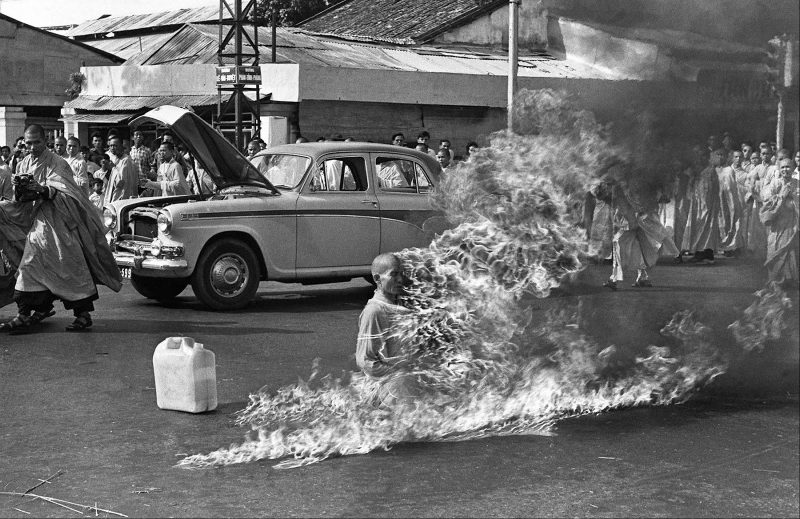In June of 1963, Vietnamese Mahayana Buddhist monk Thích Quang Duc burned himself to death at a busy intersection in Saigon. He was attempting to show that to fight all forms of oppression on equal terms, Buddhism too, needed to have its martyrs.
The self-immolation was done in protest to the South Vietnamese Diem regime’s pro-catholic policies and discriminatory Buddhist laws. In particular this was a response to the banning of the Buddhist flag, just 2 days after Diem had held a very public ceremony displaying crosses; earlier in his rule he had dedicated Vietnam to Jesus and the Catholic Church.
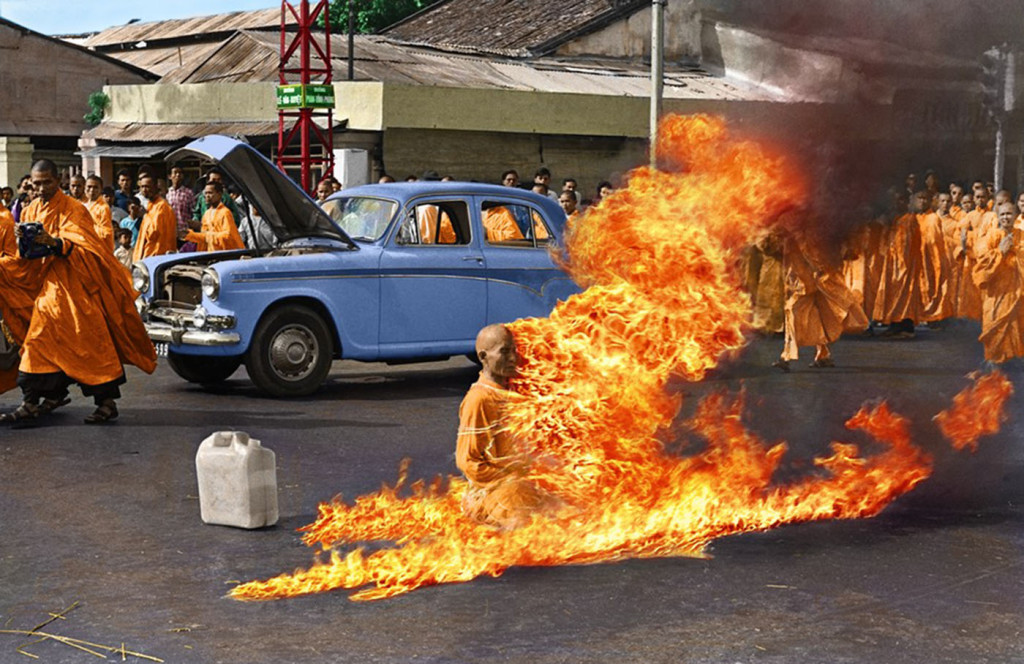
The growing resentment of Buddhists under Diem was one of the underlying issues of South Vietnam, and eventually led to a coup to put in place a leader who would not alienate Buddhists, who made up 70-90% of Vietnam’s population.
John F. Kennedy said in reference to a photograph of Duc on fire, “No news picture in history has generated so much emotion around the world as that one”. Photographer Malcolm Browne captured the scene in Saigon for the Associated Press, and the stark black and white image quickly became an iconic visual of the turbulent 1960s.
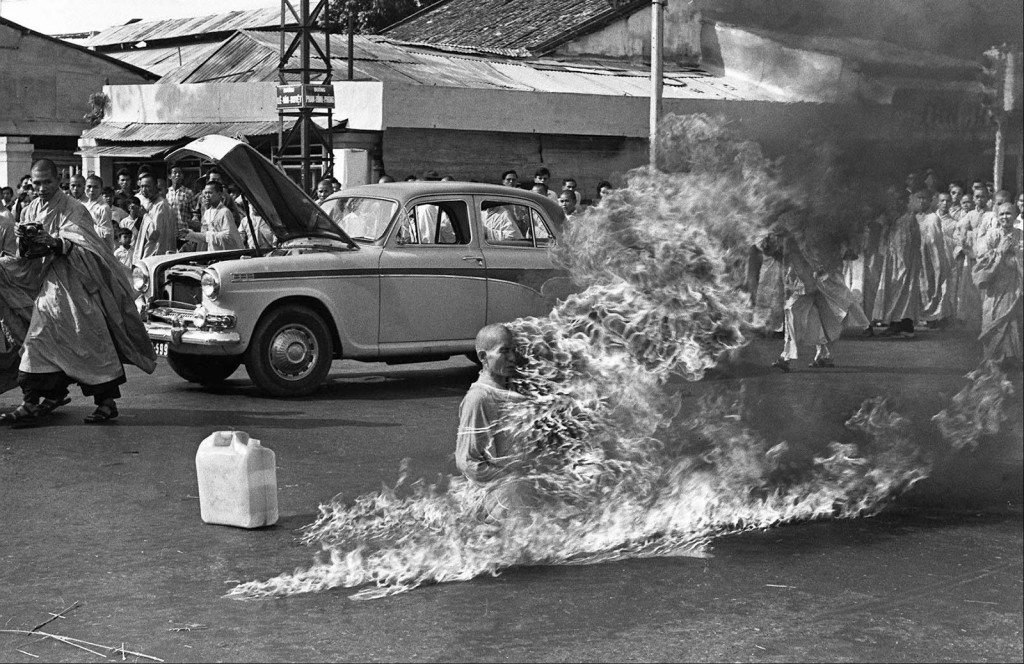
Buddhist discontent erupted following a ban in early May on flying the Buddhist flag in Huế on Vesak, the birthday of Gautama Buddha. A large crowd of Buddhists protested the ban, defying the government by flying Buddhist flags on Vesak and marching on the government broadcasting station. Government forces fired into the crowd of protesters, killing nine people.
On 10 June 1963, U.S. correspondents were informed that “something important” would happen the following morning on the road outside the Cambodian embassy in Saigon. Most of the reporters disregarded the message, since the Buddhist crisis had at that point been going on for more than a month and the next day only a few journalists turned up, including David Halberstam of The New York Times and Malcolm Browne, the Saigon bureau chief for the Associated Press. Duc arrived as part of a procession that had begun at a nearby pagoda. Around 350 monks and nuns marched carrying denouncing the Diem government and its policy towards Buddhists.
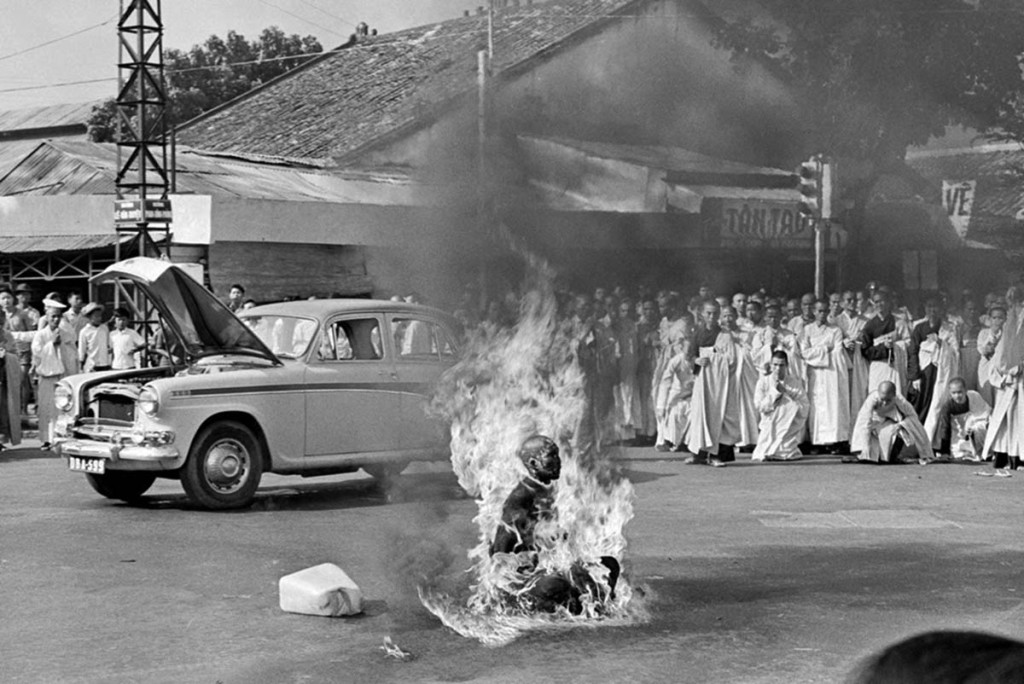
The act occurred at the intersection of Phan Đình Phùng Boulevard and Lê Văn Duyệt Street a few blocks Southwest of the Presidential Palace (now the Reunification Palace). Duc emerged from the car along with two other monks. One placed a cushion on the road while the second opened the trunk and took out a five-gallon petrol can. As the marchers formed a circle around him, Duc calmly sat down in the traditional Buddhist meditative lotus position on the cushion. A colleague emptied the contents of the petrol container over Duc head. Duc rotated a string of wooden prayer beads and recited the words Nam mô A di đà Phật (“homage to Amitābha Buddha“) before striking a match and dropping it on himself. Flames consumed his robes and flesh, and black oily smoke emanated from his burning body.
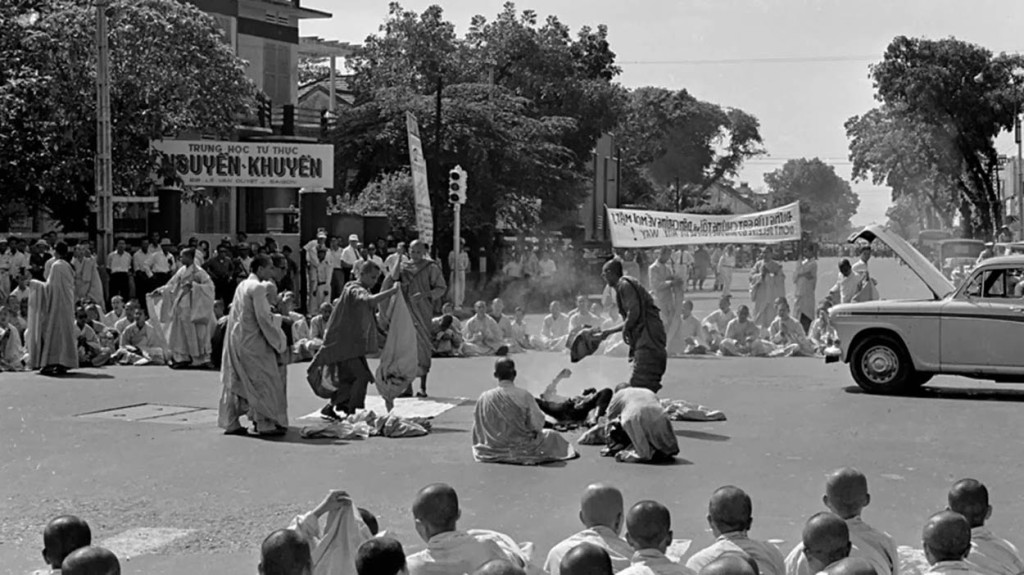
Quang Duc’s last words before his self-immolation were documented in a letter he had left:
Before closing my eyes and moving towards the vision of the Buddha, I respectfully plead to President Ngo Dinh Diem to take a mind of compassion towards the people of the nation and implement religious equality to maintain the strength of the homeland eternally. I call the venerables, reverends, members of the sangha and the lay Buddhists to organize in solidarity to make sacrifices to protect Buddhism.
After approximately ten minutes, Duc’s body was fully immolated and it eventually toppled backwards onto its back. Once the fire subsided, a group of monks covered the smoking corpse with yellow robes, picked it up and tried to fit it into a coffin, but the limbs could not be straightened and one of the arms protruded from the wooden box as he was carried to the nearby pagoda in central Saigon.
Story Courtesy of Rare Historical photos
